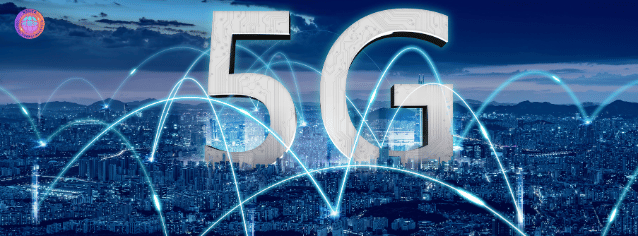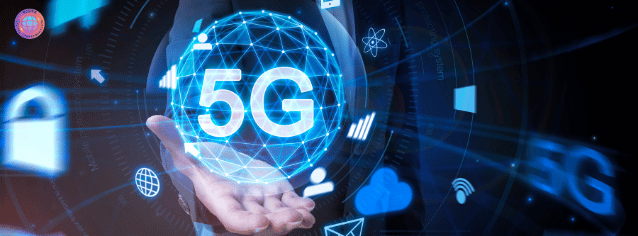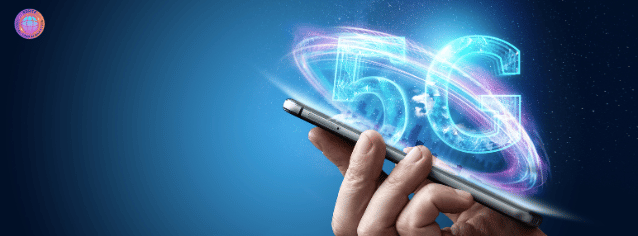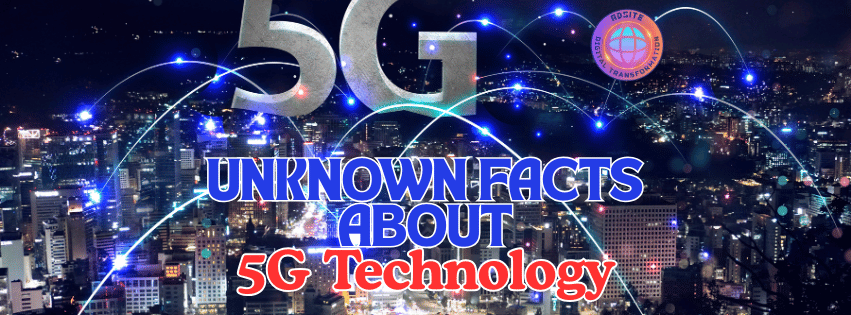In the digital age, connectivity is everything. As we progress into a world powered by real-time data and interconnected devices, the arrival of 5G technology is a game-changer. Unlike its predecessors, 5G isn’t just about speed; it’s about unlocking the potential for smart cities, autonomous vehicles, enhanced mobile broadband and a massive expansion in the Internet of Things (IoT). In this post, we’ll dive into how 5G technology is transforming the landscape of communication, its real-world applications and what we can expect from this next-generation network.
What is 5G Technology?

5G or the fifth generation of wireless technology, is an advanced cellular network that offers ultra-fast speeds, low latency and the ability to support a vast number of devices within a small geographic area. While 4G was primarily about faster mobile internet, 5G goes beyond that. With theoretical speeds up to 10 Gbps, 5G is about transforming connectivity as a whole, setting the foundation for new services and industries that rely on real-time data and high-speed communication.
Key Benefits of 5G Technology

1. Enhanced Mobile Broadband
One of the most well-known benefits of 5G is its lightning-fast speed. The increased bandwidth and capacity of 5G allow for significantly faster download and upload speeds, with a peak speed potential of 10 Gbps. For mobile users, this means near-instant downloads, 4K video streaming without buffering and high-definition video calls. Enhanced mobile broadband will also unlock immersive experiences in augmented reality (AR) and virtual reality (VR) right from mobile devices.
2. Ultra-Low Latency
Latency refers to the time it takes for data to travel from one point to another. 5G boasts ultra-low latency, which can be as low as 1 millisecond. This low latency is essential for applications that require real-time interaction, such as autonomous vehicles, remote surgery and gaming. In fact, 5G’s low latency capabilities are a primary reason it’s anticipated to revolutionize industries that rely on time-sensitive applications.
3. Massive IoT Connectivity
The Internet of Things (IoT) is the network of connected devices that communicate with each other, including smart home devices, connected vehicles and industrial machines. 5G enables massive IoT connectivity, supporting a large number of devices within a small area. By 2025, it’s estimated that there will be over 75 billion IoT devices and 5G is key to managing such high-density connections without slowing down.
4. Network Slicing
Network slicing is a unique feature of 5G that allows for the creation of multiple virtual networks within a single physical 5G network. This enables service providers to offer customized network solutions for different industries. For example, a “slice” of the 5G network can be reserved exclusively for emergency services during a crisis, ensuring that vital communications remain uninterrupted.
5G and Smart Cities: Building Connected Urban Ecosystems
Smart cities are urban areas that use data and technology to improve the quality of life for residents and enhance urban services. With 5G, the concept of a fully-connected smart city becomes achievable. Here’s how 5G is paving the way for smart city infrastructure:
1. Traffic Management and Autonomous Vehicles
One of the most anticipated applications of 5G in smart cities is intelligent traffic management. Connected traffic lights, real-time traffic data and autonomous vehicles will rely on 5G to reduce congestion, improve safety and optimize travel times. With low latency and real-time data processing, 5G enables autonomous vehicles to respond to traffic conditions instantly, making self-driving cars safer and more efficient.
2. Smart Infrastructure
5G enables smart infrastructure solutions that can monitor everything from energy consumption to air quality. Smart sensors powered by 5G can detect issues such as water leakage or power outages, alerting city officials in real-time. By enabling proactive maintenance and efficient resource management, 5G-driven smart infrastructure can help reduce costs and improve sustainability.
3. Public Safety and Surveillance
With 5G-powered cameras and sensors, cities can implement real-time surveillance systems, enhancing public safety. These systems can detect incidents such as fires, accidents or security threats, allowing for immediate response from authorities. Furthermore, 5G’s low latency ensures seamless data transfer, so emergency services can access real-time data from the field.
4. Environmental Monitoring
With 5G-enabled IoT sensors, smart cities can monitor environmental factors such as air quality, temperature and pollution levels. Real-time environmental data allows cities to make informed decisions on public health and safety measures and even implement dynamic policies to curb pollution when necessary.
5G and the Future of IoT (Internet of Things)

The Internet of Things (IoT) is expected to benefit immensely from 5G, as it enables faster, more reliable connections for countless devices. Here’s a look at some IoT applications that 5G will make possible:
1. Smart Homes
5G will empower smart homes with faster and more reliable device connections. From automated lighting and climate control to security systems, 5G enables seamless interaction between devices, creating a more convenient and efficient home environment.
2. Healthcare and Telemedicine
In the healthcare sector, 5G-powered IoT devices will enable remote monitoring of patients, real-time diagnosis and even remote surgeries. Telemedicine, especially in remote and underserved areas, will greatly benefit from 5G’s reliability and speed, making healthcare more accessible than ever.
Industrial IoT
In manufacturing and logistics, 5G is set to revolutionize Industrial IoT (IIoT). 5G networks can connect numerous sensors on factory floors, enabling real-time monitoring, predictive maintenance and automation. This connectivity can reduce downtime, increase productivity and allow for a safer and more efficient workplace.
Potential Challenges of 5G Technology

While 5G technology holds incredible promise, there are also challenges that must be addressed:
1. Infrastructure Costs
Building the infrastructure for 5G requires significant investment, as it demands more base stations and small cells to ensure reliable connectivity. Telecom companies and governments face the challenge of balancing these costs with affordable service prices.
2. Security Concerns
As with any advanced network technology, security is a major concern with 5G. The increase in connected devices and complex networks poses new security risks. From potential cyber-attacks to privacy issues, addressing these concerns will be essential to gaining public trust.
3. Health Concerns and Public Perception
Despite scientific evidence showing that 5G radiation is safe, some people still have concerns about its potential health impact. Proper communication and education about the safety of 5G technology are necessary to dispel myths and ensure public acceptance.
The Future of 5G and Beyond
The true potential of 5G technology is yet to be realized. As more 5G-enabled devices and applications come to market, we will see the evolution of new business models, services and industries. Moreover, research into 6G has already begun, aiming to provide even faster speeds and greater connectivity. The journey from 5G to 6G will likely see transformative changes in how we communicate, work and live.
5G is more than just an incremental step; it’s a foundation for future innovations that will redefine our relationship with technology and connectivity. From smart cities to healthcare, IoT to public safety, 5G is poised to bring unprecedented change to our world.
Final Words
5G technology is not just about faster internet speeds—it’s about creating a new level of connectivity that will enable a smarter, safer and more connected world. As 5G continues to roll out across the globe, its impact on industries like healthcare, IoT and smart cities will become even more evident. Embracing this next-generation network will be crucial to realizing the full potential of a connected future.
Follow Us for More Tech Insights!
📲 Stay connected on Facebook, LinkedIn and Instagram for the latest updates on How AI is Transforming Businesses in 2024. Don’t miss out—follow us today!

